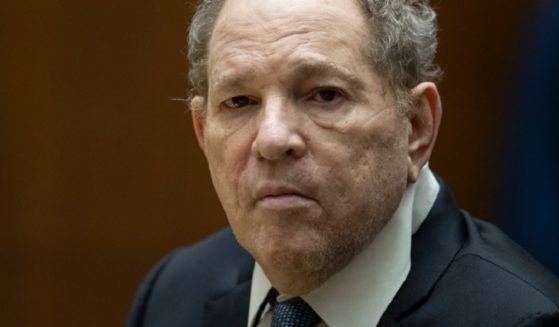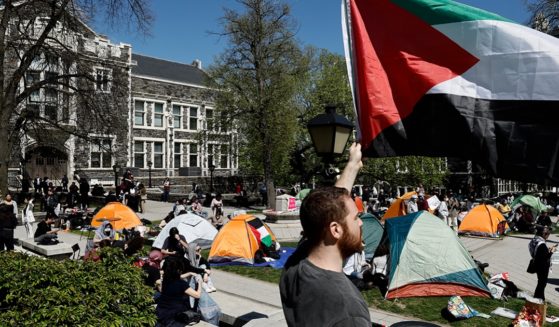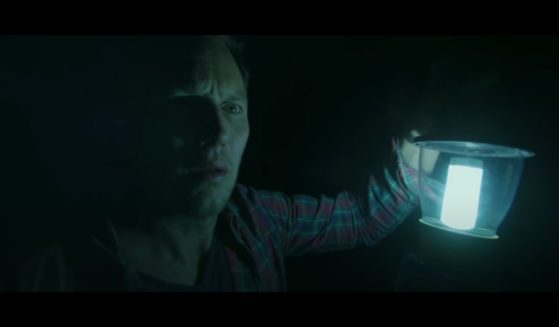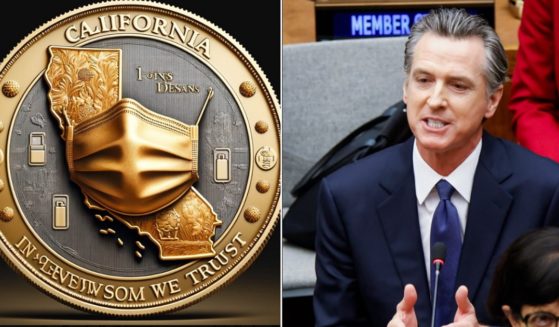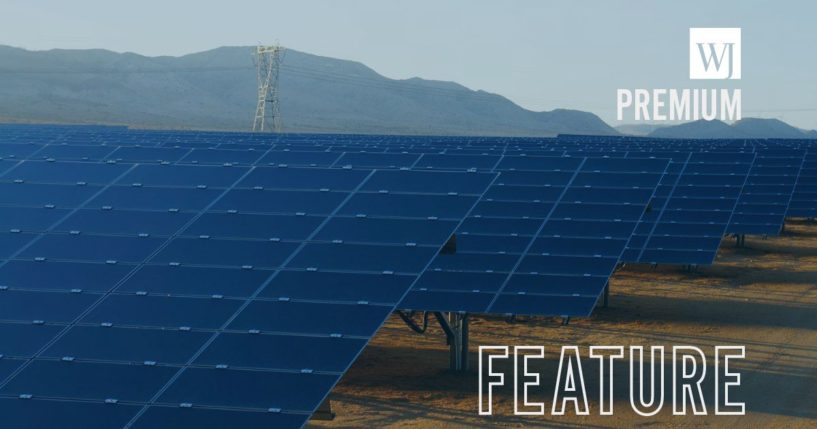
Solar Projects Turn Into Disaster as Groundwater Dries Up, Leaving Residents Furious: 'Dead Without Water'
Located just about halfway between Los Angeles and Phoenix, Desert Center, California, was once bustling with business.
In the ’20s, the local Desert Center Cafe was open 24-7 with customers filtering in and out as they made their way back and forth between the two iconic cities. According to The Desert Sun in Palm Springs, the cafe’s motto was “We lost our keys, we can’t close!”
Today, the Desert Center Cafe — along with the rest of the buildings on the dingy Desert Center main street — is abandoned and dilapidated.
Other than the small ghost town at its center, what’s left of Desert Center is the handful of small communities surrounding it.
Even absent the historic downtown, area locals had much to be thankful for. The landscape, for example, is beautiful. You can stare out at the endless desert, examine the lush palo verde and aged ironwood trees or even spot local treasures, such as the rare species of desert tortoises and sacred indigenous sites.
Thanks to the construction of massive solar farms, all of the above are under threat, along with one more resource locals likely treasure above almost all else: the water supply.
No More Water
John Beach owns a bit of land in the middle of the desolate Desert Center. At first, it’s unlikely Beach thought the area’s local solar project — a product of the Obama administration’s push to scale solar energy development on public lands — would have much of an effect on his property.
Beach’s land doesn’t even have a home on it, only two palm trees, both of which he has been watering for 15 years.
These trees typically don’t cost too much to maintain; in January, Beach’s electric bill for the property was $15.
However, over the next month, something changed: In February, his bill skyrocketed to $1,800.
Not too long after, a local RV park began facing water issues as well. All 70 of its residents were left without water for a week. Eventually, they managed to resupply by lowering the local well’s water pump, which cost a whopping $16,000.
“That park is dead without water,” the park’s property manager, Nick Melendez, said. “You can’t even get water trucked in out there.”
According to an extensive report on the issue published Monday by Inside Climate News, a self-described nonpartisan, nonprofit climate change news organization, the massive solar farms near Desert Center are drying up the area’s water supply.
In and around the California community, one underground water source provides all local water. Like many communities all over the Southwest, Desert Center is overly reliant on this one water source.
While the solar projects were approved with the thought that there would be enough water left for everyone, the data used for that approval were limited and, in the end, turned out to be faulty, per Inside Climate News.
Though operating solar panels doesn’t require much water, building them does, especially to clean off dust, which, if left untouched, could cause various health problems for those nearby.
Despite those reports, former Bureau of Land Management officials told Inside Climate News, the federal agency knew the solar panels could impact locals’ access to water. Studies and other public documents showed the extent to which this was the case, but the agency went ahead with its plans anyway.
Typically, there would be either state or federal regulations preventing the U.S. government from enacting such an imposition on the locals.
However, given the fact that these are public lands, the issue is a bit more complicated — especially given the fact that the state and federal governments are rushing to meet ambitious green energy goals.
Essentially, local and state governments have no say over the matter, according to Dustin Mulvaney, an environmental studies professor at San José State University.
“It’s a consequence of a public lands project,” Mulvaney told Inside Climate News.“This is a gap in the state’s plan, not just regulation or oversight, but just tracking. This is a huge gap for them.”
Locals Push Back
Beach’s concern for his two palm trees is far outweighed by his concern for the communities surrounding Desert Center.
Speaking with Inside Climate News, Beach said he heard that two commercial fish farming operations were experiencing setbacks because of a lack of water.
He believes many locals may soon feel the effects as well. This includes residents of Lake Tamarisk, a retirement community just north of downtown.
“I’m not hurt really. I just have palm trees that are gonna want water,” Beach said. “But if the Lake Tamarisk public water system goes out, you’ve got 200 people without water, and it doesn’t just get turned on again the next day. I mean that is a terrible thing to allow to happen.”
Locals in Lake Tamarisk aren’t only upset about the sudden lack of water. They’ve also been forced to watch the beautiful environment and wildlife native to their area fade away and become replaced by bulky solar panels.
“No one took into consideration a community lived out here,” Teresa Pierce, a community representative, told Inside Climate News.
“[W]e’re against it being so close to our community and stealing our water out from our aquifer.”
This Problem Soon Might Spread Across States
In 2012, then-President Barack Obama’s BLM created a plan to turn 298,321 acres of public land into “solar energy zones” as part of the liberal administration’s push to transition away from fossil fuels.
According to Inside Climate News, half of those acres were near Desert Center.
The bureau is now reviewing the plan with hopes of spreading the project across five more states.
In places such as California where panels are already in place in great numbers, BLM plans to develop even more.
The current presidential administration is looking to pick up where the Obama administration left off when it comes to green energy initiatives.
According to Fox Business, in late 2022, President Joe Biden announced his intention to replace all coal-powered power plants with wind and solar energy sources
In such areas, locals better be capturing one last look at their age-old countrysides. Pretty soon, all they’ll be able to see is large masses of silver sheets of metal.
Truth and Accuracy
We are committed to truth and accuracy in all of our journalism. Read our editorial standards.


